
views
Treating Spots
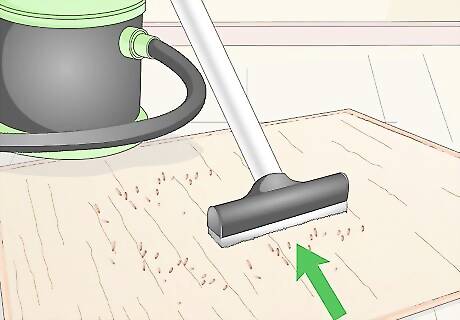
Vacuum the rug regularly. Natural rugs must not be washed regularly, since they absorb moisture. Instead, vacuum the rug a few times per week using a suction brush. Pass over it several times, moving in a different direction each time to help dislodge the dirt. Do this before treating spots and a few times per week to keep your rug clean.
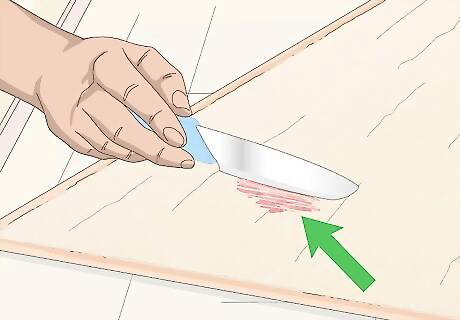
Scrape up solid spillage. This should only be done for food, makeup, chalk, soot, and other substances too solid to be blotted. Use a dull knife or nail file. Hold the knife flat against the rug and use it to scrape up the substance without spreading it.

Blot liquid spills with a paper towel. Any food or liquid spills need to be absorbed immediately using a paper towel or undyed cloth. Dab the area with the towels to remove as much of the liquid as possible.

Mix detergent and water. In a small bowl, add a small amount of a neutral dish detergent, such as Dawn, to an equal amount of lukewarm water. Stir the mixture until it is soapy. Avoid using laundry soap and other cleaners, as these can change the rug’s color. Another option for cleaning seagrass rugs is commercial cleaner such as HOST Dry Cleaner. Follow the directions on the label to treat the spill.

Sponge the cleaner onto the stain. Dip a sponge or a brush into the detergent mixture. Apply small amounts of the cleaner onto the outside of the stain, working towards the center. This will help get rid of food, drink, and pet stains. Dissolvers such as Tetra and petroleum solvent for oil and acetone polish remover for nail polish can be substituted to combat specific stains. Apply sparingly the same way you would detergent.
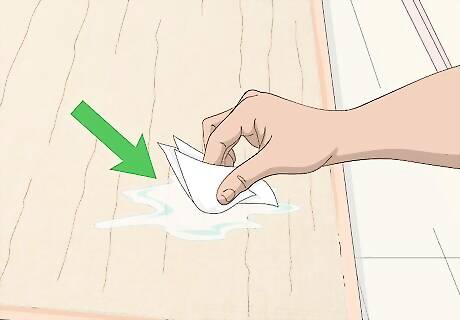
Blot the rug with a paper towel. Again, only use paper towels or undyed cloths to avoid staining the rug. Use these to remove excess moisture before it gets absorbed into the rug.
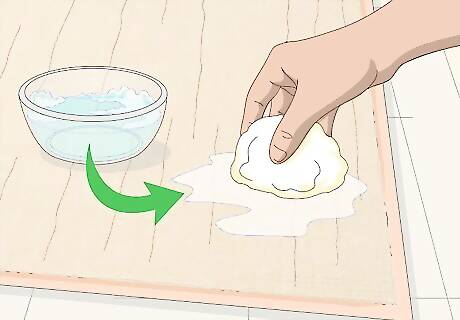
Repeat stain cleaning. When the stain persists, you may still be able to remove it. Add more of your cleaner and apply it the same way you did before. Follow it up by blotting off the excess using paper towels or undyed cloth. Do this a few times.

Dry the rug quickly. Once the stain is treated, remove the moisture before the rug absorbs it. Apply a heat source, such as that from a hair dryer. Focus heat onto the wet area and dry it quickly.

Use spray-extraction for deep cleaning. As a last resort for a soiled rug, find a machine that has a spray-extraction setting. Set the machine to the lowest moisture setting. In this method, the machine applies liquid cleaner and then quickly removes it.
Cleaning Pet Urine
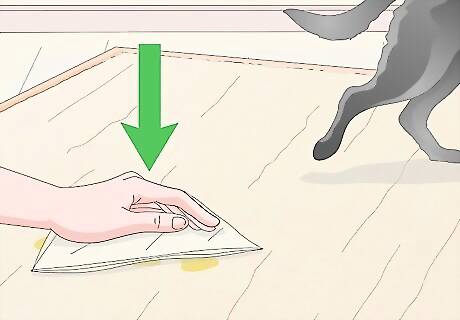
Blot the urine. Quickly apply paper towels or white, undyed cloth on top of the spill. Pick up as much moisture off the rug as possible.
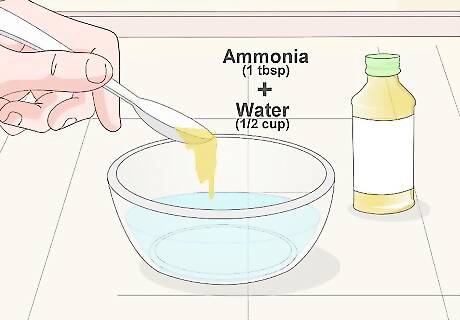
Mix ammonia and water. In a bowl, combine 4 fl oz (120 mL) of water and 0.5 fl oz (15 mL) of ammonia. Stir the mixture as thoroughly as possible.
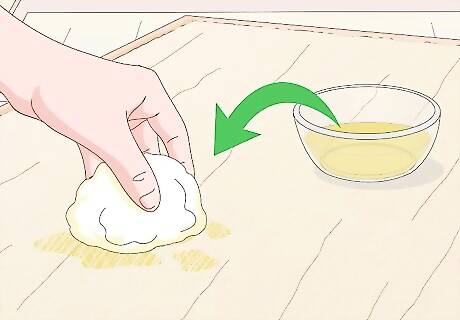
Dab the solution onto the stain. Use an undyed white cloth or paper towel. Dip the cloth into the ammonia solution, wringing out excess moisture before patting the stain with the cloth. Cover the area with as little cleaner as possible to avoid damaging the rug.
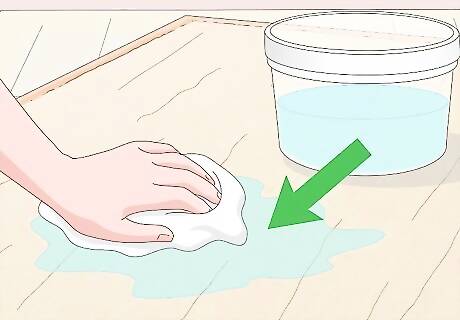
Wash the area with a damp towel. Get a clean, undyed cloth or paper towel. Dip it in clean water, not the cleaning solution. Wring out the cloth to remove excess moisture, then blot the ammonia-treated area to pick up any ammonia left on the rug.

Mix vinegar and water. In a clean bowl, add 2 fl oz (59 mL) white vinegar to 2 fl oz (59 mL) water. Stir the mixture thoroughly. The vinegar solution will remove the smell of urine. Vinegar is for removing the smell of urine, so it is only necessary when the scent lingers after normal spot cleaning.
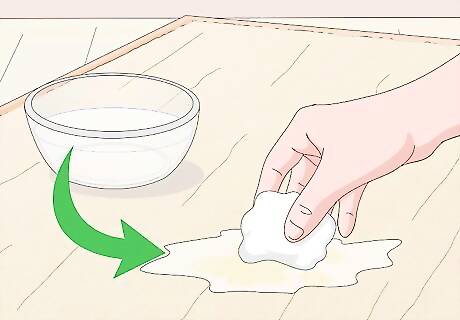
Apply the solution to the rug. Use another dry, undyed cloth or paper towel. Dip it into the solution, and wring out excess moisture. Then, pat the stained area with the cloth or paper towel.
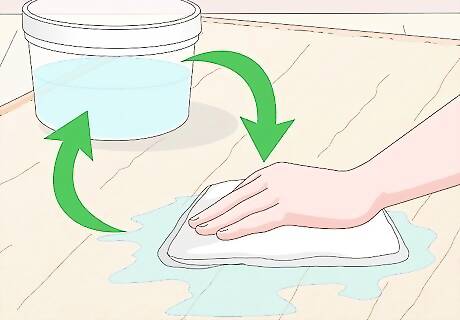
Wash the treated area again. Only use a clean, undyed cloth or paper towel. Dip it into clean water, then wring out the excess moisture and dab it onto the treated area. This will remove the vinegar on the rug.
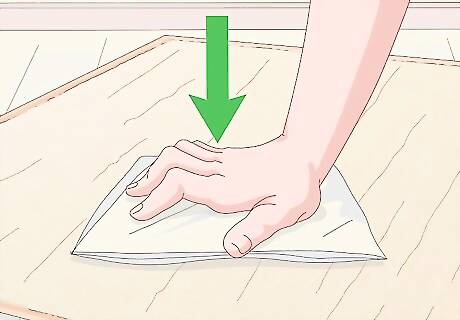
Dry the wet areas. Once the ammonia or vinegar is washed from the rug, blot the treated areas on the rug with a paper towel or undyed cloth. To dry the rug quickly, use a hair dryer.
Removing Mold
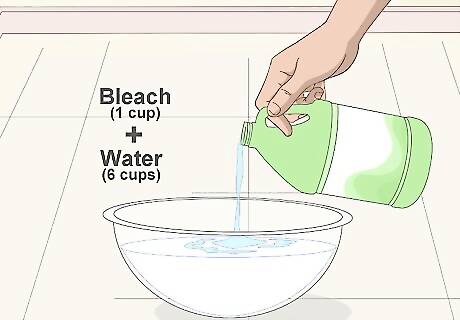
Mix water and bleach. Add a cup of chlorine bleach to a bowl. Dilute the bleach with 48 fl oz (1,400 mL) of water. Stir the mixture thoroughly to minimize the rug’s exposure to the bleach.

Pour the mixture into a spray bottle. Since adding too much bleach to the rug can discolor it, do not apply it directly. Instead, get a spray bottle from the store. Pour the bleach into the bottle and mist a thin coating on the moldy areas.

Spray the mixture over the rug. Spray as lightly as possible, covering the rug in an even coating. Do this only on the rug itself, not the binding. You may want to test the spray in a single area first to see if it discolors the rug. If it does, add more water to the mixture.

Blot the rug after 10 minutes. Allow the bleach mixture to work on the mold for 10 minutes. When the time is up, take paper towels and blot the rug to remove moisture. Make sure you blot up as much of the bleach as possible.

Dry the rug. Allow the rug to air dry, or dry it quickly using a hair dryer. This ensures that none of the moisture or bleach soaks into the rug, minimizing damage from treatment.


















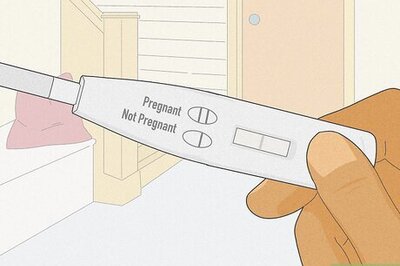
Comments
0 comment